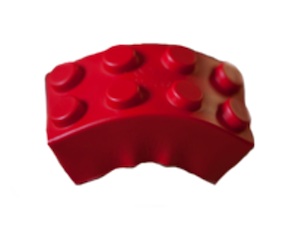Soft, Foam Blocks from Soft Blocks Are Great Fidget Toys

Disclosure: I received a sample of these soft, foam blocks from Soft Blocks. Any opinions are my own.
For the past few weeks, I’ve found so many great uses for these squishy foam blocks. These blocks are made from the same material that you might have in your favorite stress ball. However, what a stress ball can’t offer that these blocks can provide is that for kids or even adults who need more fidgeting options than squeezing, they can be stacked, sorted and inter-locked in all sorts of designs. While I’ve also used them at school with the children working on sorting and stacking, Gavin had the most fun with them this summer building, stacking and retrieving them in the bathtub and swimming pool, because they float.
If you aren’t familiar with the theory behind “fidget toys,” think about what your body does to sustain attention when you are required to sit at your desk or in the same seat at a conference for long periods of time. While as adults we might drink water, walk to the bathroom, click the tops of our pens, shift in our seats, bring candy/gum, listen to music, or pace the back of the room, think about the child in a classroom who is working hard to sustain their attention to the activity or the teacher, but they aren’t generally allowed to self-regulate the same way adults are.
Not all adults or children are static seated learners. Some children remember information more readily if they are allowed to learn addition or subtraction by hopping along a number line, instead of working it out with pencil and paper. Other children who may have varying diagnoses like Attention Deficit Disorder or Sensory Processing Disorder, may not have the ability to control their impulses because they are distracted by thoughts in their head or other noises, lights or experiences in the school environment. At school, we often find some creative ways to help children appropriately and safely sustain their attention. Schools may provide accommodations where they are allowed to take sensory diet movement breaks, stand to do work instead of sit, or sit on a special seat cushion or in a chair, while their peers might sit on the rug with their legs crossed. While a fidget item can serve as a distraction for others, many children can be taught how to safely and appropriately use a fidget toy. Just because a child or an adult looks like they may be paying more attention to the toy they are manipulating, it doesn’t necessarily mean that they aren’t learning the information.
Fidget toys come in all shapes and sizes, and what will work for one child, many not for another, but with structure and clear expectations, items like these foam blocks not only provide fine motor skill and coordination, but they can be a great tool to help children learn.
Soft Blocks, are recommended for children ages 3 and up and are sold in a set of 36, with four primary colors, red, blue, yellow and green.
Related Articles
– Homework Hot Tips
-What is Sensory Processing Disorder? (Article on PlayonWords.com written by Keriann Wilmot, OTR/L)